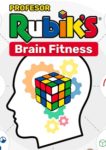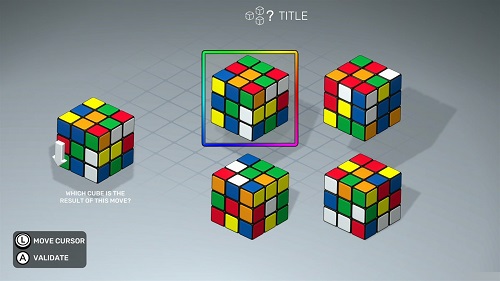Professor Rubik’s Brain Fitness (PS4, Switch, Xbox One, PC)
 I grew up as a kid in the 80s, and one of the things I remember being SUPER POPULAR for a while was the Rubik’s Cube puzzle toy. It was everywhere, and everyone had it. It was so big that at one point, there was a Saturday morning cartoon about it. I’m not kidding, go look it up after reading this review. It’s crazy! And now, 40 years later, you can play a video game and exercise your brain with puzzles based on the 80’s icon. Professor Rubik’s Brain Fitness is available on most current consoles and PC, but reviewed on PS4 here.
I grew up as a kid in the 80s, and one of the things I remember being SUPER POPULAR for a while was the Rubik’s Cube puzzle toy. It was everywhere, and everyone had it. It was so big that at one point, there was a Saturday morning cartoon about it. I’m not kidding, go look it up after reading this review. It’s crazy! And now, 40 years later, you can play a video game and exercise your brain with puzzles based on the 80’s icon. Professor Rubik’s Brain Fitness is available on most current consoles and PC, but reviewed on PS4 here.
There are two main modes of play: Training and Free Play. In Training, you can do Daily Training where you complete three exercises every day. These exercises take the form of mini games where you may need to quickly answer math problems, compare colored cubes, match Rubik’s Cubes even after they’ve rotated, and many more. There are 22 of these mini-games in all. One thing I like about these games is they all keep the Rubik’s Cube theme with squares and colors very well. So they really put some thought into keeping this game focused. You can also do a Brain Evaluation where you do six of these exercises and the game will calculate how much percentage of your brain you’ve used, as well as which aspects of your brain you did well on and which things you can improve. The only bad thing about these evaluations is that if you pause the game, you have to start the evaluation over again. So make sure you have a good 10 to 15 minutes of uninterrupted game time before you start one. You can also view your progress in the Profile menu, and unlock and learn interesting facts about the Rubik’s Cube and its creator in the Gallery.
The other mode is Free Play mode. Here you can play puzzle games with one or two players. These games include:
Cube 2048
I’ve played a game like this on mobile devices. You must tilt three sides of a Rubik’s Cube that has numbers on it so the same numbers match and turn into multiples of that number. You must then repeat the process with higher numbers to reach a goal. When you can’t slide any more numbers, it’s game over.
Colored Gates
You must roll a cube around a field of colored cubes to create the longest path, but I had a hard time wrapping my head around it.
Mysticube
You must slide cubes to match the set pattern on the other side. I think I had a board game like this as a kid.
Match 4
Colored cubes fall into a well like Tetris, and when they hit the bottom you can rotate four of them and match colors to make them disappear. All four puzzle games are fun, but a bit slow sometimes.
There is also a Party Mode for two to four players where you play the 22 mini-games from the training exercises and try to get the best score. Whoever reaches a target score first, wins.
I really liked this game, but I can’t help but think it would’ve been way more popular in the 80’s. But then, this kind of game probably would’ve been impossible to do back then either. Except maybe in arcades. I also think this game would’ve been more popular back during the ‘brain training game’ craze that swept during the Nintendo DS days. It really feels like it would’ve been a better game on a handheld or mobile device. But if you like puzzles, you may want to check this one out anyway.
Kid Factor:
Nothing violent or objectionable here. Strong reading skill is a must, as well as color and number recognition. Elementary school kids who know their multiplication tables at least should do well here. The game could definitely be considered educational, too. Professor Rubik’s Brain Fitness is rated E for Everyone.






Discussion Area - Leave a Comment